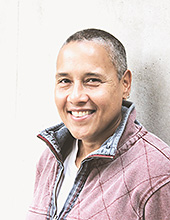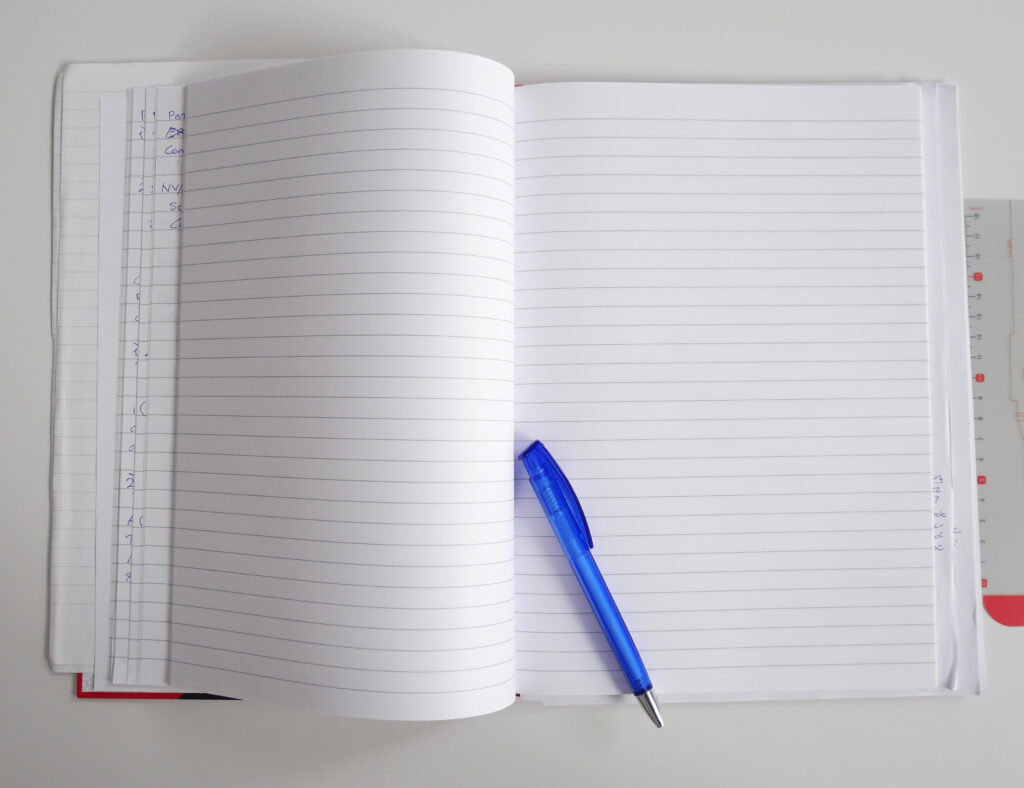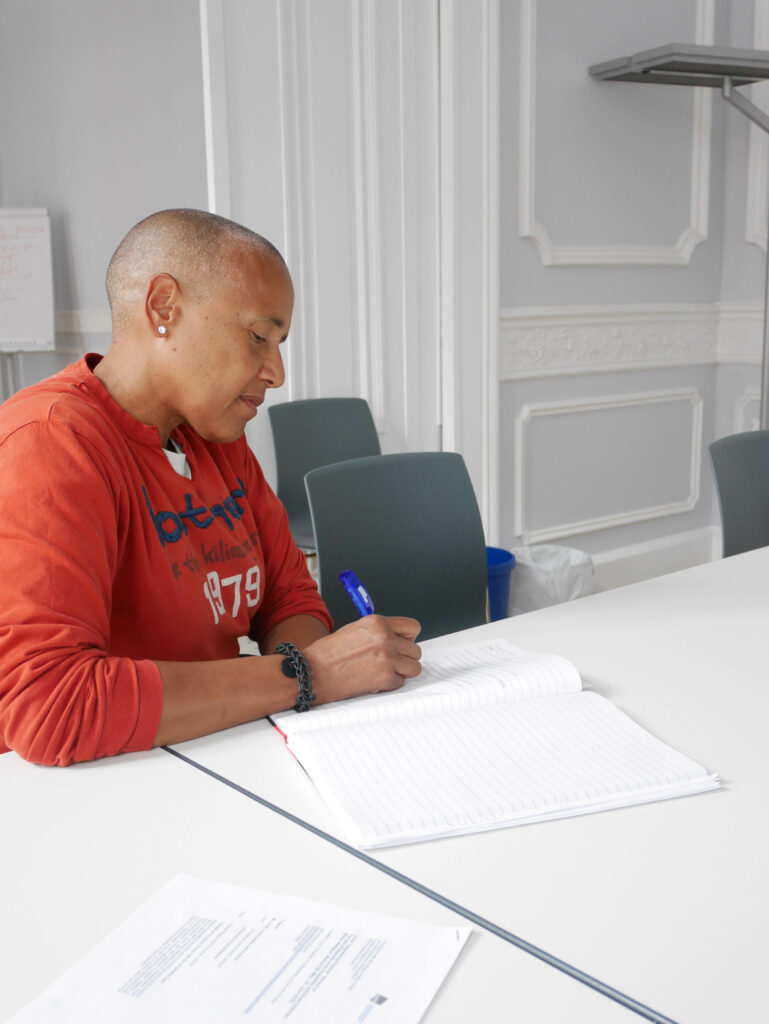Producing, sharing, questioning, and contesting knowledge – in academia this is done mostly by writing and publishing papers. To make themselves heard in the academic world and to take part in scholarly debates, researchers have to write down their thoughts, ideas and suggestions to research problems and questions. Writing is an essential research practice. But rather than focussing on the finished product, the well composed text, edited, proof-read multiple times, peer reviewed, and published in a (most desirably high-impact) journal, let’s take a few steps back to the very beginning of a research project. What precedes even the “shitty first draft” of a written piece? I would like to look at the threshold where thoughts “materialize” and are written down for the first time. Let’s do this by shedding light on a particular object that is often overlooked when it comes to academic writing: the notebook. I interviewed some of the fellows at the Käte Hamburger Kolleg: Cultures of Research (c:o/re) about their note taking.

Catharina Landström
Catharina is an Associate Professor of Science and Technology Studies at Chalmers University in Gothenburg, Sweden. Prior to that, she was as senior researcher at the School of Geography and the Environment at the University of Oxford, England. Right from the start of her professional carrier, she has conducted a lot of field work, for example on water challenges such as flooding, draughts and water quality. At c:o/re she explores how environmental scientists present and convey results from- and tools of computer simulation modelling for decision making processes
Stefanie Haupt: Catharina, when I saw you with your notebook during the c:o/re Lunch Talks it really fascinated me how neatly you were taking notes. Your notebook has lined pages in an A4 format. Do you prefer a certain type of notebook?

Catharina Landström: I do take notes on any sort paper I can get hold of! Normally, I just use what I can find: binders that came as a kind of gift at conferences etc., or I use whatever I can find in the storage of the university. I prefer writing on lined paper. Squared paper does not really work for me. And blank paper – I get paralyzed when the page is empty! Papers with a column on the left side are quite nice for making comments. I like taking notes in wire bound notebooks. Then I can easily take out the page because, depending on the topics I am working on, I collect the pages on different piles. I also have different notebooks for different topics and tasks, for example for the different PhD projects that I supervise. The notebook you saw in the Lunch Talk is my c:o/re notebook.

Stefanie: When did you start taking notes and in which situations do you use your notebook? You did a lot of field work. Did you also bring a notebook when you were out in the field?
Catharina: Right from the beginning of my studies I took notes. But the way I do changed much over the time: I remember in my PhD project while working in the field, I took so many notes, I sometimes could not make sense out of them afterwards. The field is a difficult place for taking notes. It is a really stressful work. Everything that happens “passes” through you. In the field you are the tool. And notes are more than notes. So, I tried to capture everything. Today, I take less notes but they are more precise. It is really a learned skill.
Stefanie: So, what is it that you note down?
Catharina: Thoughts. Thoughts of others, my own thoughts while listening to a talk for example. My notes help me to remember better. For example, I note down what I discuss with my PhD students. I also write down ideas for project proposals. By going through them, my notes help me to further develop ideas.
Stefanie: Did you develop a kind of private system? Like a colour code? And how do you further process your notes?
Catharina: A colour code would require having a fixed set of colour pens with me all the time – so, no. But when I listen to talks and note down what I hear, I distinguish the thoughts of others from my own by putting mine in squared brackets. Questions that arise come in round brackets. The notes I take are only for myself. I switch to the digital when I want to further develop ideas for myself or when I want to share them with somebody else.

Stefanie: Do you keep your notebooks?
Catharina: I keep them for a while. Everything is time limited, you know. Then comes the time when you can either store your notebooks in a box in the attic or throw them away. Once I suggested to a friend to throw away the notes she took during an interview project in the 90s. She was really irritated by this suggestion.
Stefanie: You told me that you were wondering at some point if you might also switch to the digital for note-taking, too.
Catharina: Oh, I did. Everybody brings their (laptop)notebook to academic discussions today. I tried that for a while, too. But I noticed that I never go back to look at digital notes again [Catharina laughs]. I don’t know what it is, maybe it is the paper, the feel, the way you can browse through the pages. It has a different quality somehow.
Stefanie: Thank you, Catharina, for your time!



